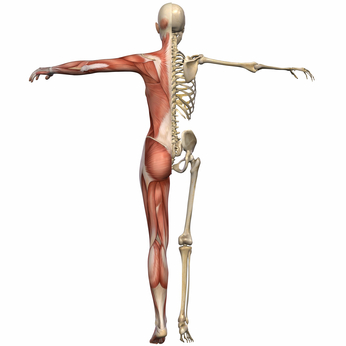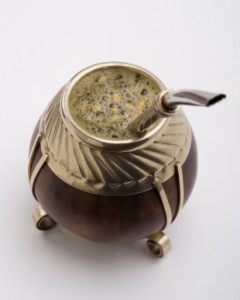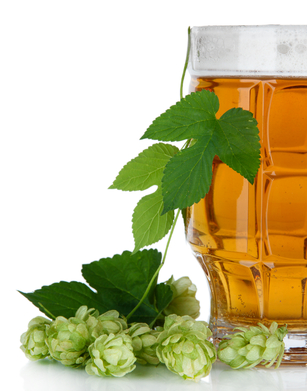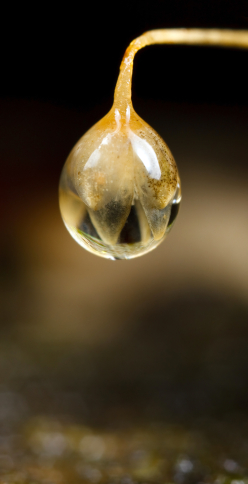Newsflash! Severe hot flashes? Keep an eye out for bone health!
Heads up! If you experience moderate to severe hot flashes and night sweats, you may be at higher risk for lower bone density and in turn, a higher rate of hip fractures than women without these symptoms. These study findings were published online yesterday in the Journal of Clinical Endocrinology & Metabolism,
A bit of background…researchers prospectively examined data from over 23,000 women participating in the Women’s Health Initiative study who did not use hormones. The goal was to assess the association, if any between vasomotor symptoms, that is, hot flashes and/or night sweats, and bone mineral density. In turn, they collected self-reports of fractures (i.e. hip, spine, non-vertebral) on a semi-annual basis; these were subsequently confirmed by reviewing medical records.
The findings? Over an average of eight years, women who reported moderate to severe hot flashes or night sweats had almost twice the risk for developing a hip fracture over the time period of the study than women who did not, regardless of a younger age or higher body mass index, or other factors such as time since menopause, race/ethnicity or physical activity. And, while additional analyses did slightly reduce this risk, moderate to severe vasomotor symptoms remained a significant risk factor for hip fracture over the study course. Additionally, the findings demonstrate that women with more severe symptoms had lower bone mineral density measures over time in the hip joint and spine.
Although it’s unclear, the researchers note that lower estradiol levels may account for the association between more severe symptoms and lower bone mineral density (as, data have shown that women with higher estradiol levels during menopause tend to have lower rates of bone loss). Regardless, having more severe flashes and sweats should raise a few red flags for women and their practitioners and prompt greater attention to lifestyle strategies for preserving bone mineral density. This topic has been covered thoroughly on Flashfree, and strategiest include diet, weight-bearing exercise and adequate sun exposure.
Read More
Fracture me this: is it time to up your D quotient?
 Too much D is too much of a good thing, isn’t it? But now, data presented a few weeks ago at the American Society of Bone and Mineral annual meeting is turning recommendations on their head, once again. (If you wish to check the evolving data on Vitamin D, take a look at the Flashfree archives here.) The latest conclusion? If you are in menopause, you need to start maintaining high vitamin D levels >20 ng/mL (500 IU) daily to reduce your risk of fracture.
Too much D is too much of a good thing, isn’t it? But now, data presented a few weeks ago at the American Society of Bone and Mineral annual meeting is turning recommendations on their head, once again. (If you wish to check the evolving data on Vitamin D, take a look at the Flashfree archives here.) The latest conclusion? If you are in menopause, you need to start maintaining high vitamin D levels >20 ng/mL (500 IU) daily to reduce your risk of fracture.
As I’ve discussed throughout the years, bone loss increases significantly as levels of estrogen and FSH fluctuate and eventually decline. Moreover, these changes can start as early as age 35 and by the time women reach the age of 50, they have a 40% risk of suffering a fracture due to osteoporosis during the rest of their lifetime. However, in this particular study, which evaluated the role of serum vitamin D in fractures related to falls from standing height or less in women participating in the Study of Women’s Health Across the Nation (SWAN), higher levels of vitamin D were associated with as much as a 45% lower non-traumatic fracture risk compared to levels below the 500 IU daily mark. Additionally, even after the researchers accounted for potential confounding factors, such as the women’s bone mass density and body mass index (BMI), these findings remained. Another important point about this study is that previously, most of the evaluations have been conducted in post menopausal women; this particular group of women were undergoing the menopausal transition. The findings also did not demonstrate any association between vitamin D intake and fractures resulting from traumatic events, such as playing sports or a car accident).
The researchers point out that the underlying role of vitamin D may be its affect on bone quality, adding that they did not set out to measure that so no firm conclusions can be drawn. They also note that they did not see any benefit to upping vitamin D intake between five and one years prior to final menstrual period, meaning that this strategy should be incorporated early on during the pre-menopausal or peri-menopausal years (women between the ages of about 35 to 51, I am talking to you!!!!). Finally, no mention was made of the other risks of high vitamin D intake, such as cardiovascular issues so before you head to your local drugstore, do speak with your health practitioner.
Read MoreAre hops the key to relieving menopausal symptoms?
The other day, a colleague pointed me to an Andrew Weil piece on hops and menopause. And while I’ve not checked out the association lately, I did write a few pieces over the years about the potential benefits of hops and hop extract for relieving hot flashes and even boosting bone health. So, I took a gander over at the National Library of Medicine database and ran across a minireview from 2013. Here’s a bit of information for those of you who enjoy a beer or two.
Hop extract (better know in scientific circles as Humulus lupulus) has had a long history of use as a medicinal herb, especially for gynecologic conditions. It is even recognized by the European Medicines Agency, which has published a monograph outlining its safety and effectiveness. But even more importantly, hops evidently contains a subclass of flavonoids — plant metabolites — that have been shown to be the most potent phytoestrogen known to date. Clinical studies in women suggest that it can offer some relief from hot flashes, help prevent osteoporosis and impact sexual desire. And the fact that it is the ‘most’ potent? It’s interesting because most people don’t realize that to truly benefit from genistein, the most potent phytoestrogen derived from soy, one must be exposed to it throughout their lifetime. On the other hand, studies of 8-PN show that it is quickly absorbed and blood levels can also be reached fairly quickly so that women can benefit relatively shortly after taking a supplement. Less clear is the proper dosage need to alleviate menopause complaints. This hops extract has also been studied in vaginal gel form for vaginal atrophy, although no firm conclusions could be drawn for that use.
So far, the benefits of 8-PN appear to be limited to hot flashes, bone health and sexual motivation. The data on safety are less robust.
Will drinking beer help your hot flashes? The answer isn’t clear. But I still believe that there is hope for hops.
Read MoreGuyside: Don’t let winter weigh you down

There may not be a five-mile skating rink like Ottawa’s Rideau Canal in your town. But there are lots of opportunities for physical activity, even when the days are short and temperatures drop.
Where I live, this is the darkest time of the year. Instead of a beautiful sunrise when I wake up, it’s dark. When my partner is walking home from her office, it’s also dark. The layers of clothing get added to. The gloves and the puffy jackets come out of the basement. And the road bike gets brought inside and put on the trainer. Even though the winter solstice in December marks the is a welcome “bottom” to the year, before and after, the days are dark and short and cold.
When I was a kid, winter was the time for snow forts and snowmen and skating in the community rink while Anne Murray tunes scratched over the PA system.
Now, winter is the time of year where I have to shovel the driveway, wear heavy boots that I don’t like, and the time when I can’t ride (I know I could ride, but I’ve never been a winter cyclist type).
When it’s snowy and cold, It’s easy to find that hot new series to watch, to light a fire, pop some popcorn, and wait for spring. It’s just too tempting to simply hibernate in the house over the winter months. And it’s also a terrible idea when it comes to men’s health.
In Canada, studies show that people are nearly twice as likely to participate in any physical activity in summer compared to winter. And if you look at the sporting activities Canadians participate in, only two of the top 10 are winter sports. In Canada, it shouldn’t be surprising to anyone that ice hockey bumps up winter sports participation numbers, and even with the burgeoning popularity of women’s hockey it’s still predominantly male.
And the irony of all this is that when you exercise outdoes in the winter you burn up to 31% more calories than in warmer weather.
So, some tips for guys like me who don’t play hockey or ski for getting out there:
- “There’s no bad weather, just bad clothing” is an a age-old proverb. So if you’re going to invest, invest in good layers of clothing. Go to a store that specializes in outdoor gear for winter so that you can benefit from knowledgeable staff. Fitness magazine has some tips on how to dress for outdoor exercise.
- If you’re a beer-league hockey player, don’t just rely on the hockey to keep you fit. The start-stop nature of hockey can be dangerous for people who don’t have a good base of fitness.
- Some sports — hockey and skiing come to mind — can be pricey to participate in. But skates and snowshoes are cheaper than fully kitting out for playing hockey or going downhill, and walking (with appropriate footwear that will keep you stable) is the cheapest form of all. I live in Ottawa, where for several weeks each year the Rideau Canal turns into a free five-mile skating rink (your hot chocolate will cost you, though). Also, rent before you buy if you aren’t sure if you’re going to stick to a given activity.
- Find a buddy. There will be times when you can’t drag your own sorry butt out for that workout, which is when you need the nagging, cajoling, and potential bribery of a friend to get you going. Use that help, and offer it to your workout buddy.
- If you just can’t stand winter, then bring your sport indoors. My road bike is hooked up to a trainer, so I have the opportunity to ride inside. Other people go to spinning classes to benefit from the motivation of others suffering around them (N.B.: One discovery from spinning — all that sweat that evaporates when you’re riding the bike outside turns into a puddle beneath the bike when you spin. Be warned.)
- Even if you don’t hit the gym in summer, many will offer “winter membership” or monthly memberships.
If your tendency, like mine, is to go to ground when exercising is no longer just a matter of tossing on a t-shirt, shorts, and going, then you, like me, have to just work a little harder to not give in. Besides, drinking that cocoa will feel SO much better if you skated five miles to get it.
Read MoreCan yerba mate protect your bones?
 Have you heard of yerba mate? Made from dried, ground leaves and twigs of a tree indigenous to South America (Ilex paraguariensis), yerba mate is a caffeinated beverage that is steeped in hot water and drunk through a metal straw inserted into a dried gourd. This method of consuming yerba mate is known as mate cebado. Like coffee, tea and colas, yerba mate contains a stimulant (xanthine), and on average, contains about 330 mg of caffeine for every (1.5 quarts) consumed.
Have you heard of yerba mate? Made from dried, ground leaves and twigs of a tree indigenous to South America (Ilex paraguariensis), yerba mate is a caffeinated beverage that is steeped in hot water and drunk through a metal straw inserted into a dried gourd. This method of consuming yerba mate is known as mate cebado. Like coffee, tea and colas, yerba mate contains a stimulant (xanthine), and on average, contains about 330 mg of caffeine for every (1.5 quarts) consumed.
Why the interest? Well, coffee and consumption of caffeine have been linked to lower bone mineral density, accelerated bone loss and increased fracture risk, all major red flags for women as they age who become increasingly at higher risk for osteoporosis. Conversely, beverages like green and black tea, both of which have considerable caffeine content, are reportedly protective of bone. So, what about yerba mate and your bones?
In study in the January 2012 issues of Bone, researchers looked at the effect of yerba mate in postmenopausal women who drank at least a liter per day (prepared as mate cebado) for five years. These women were sedentary, did not smoke or also drink more than three cups of coffee or tea daily, were not on HRT or bisphosphonate therapy and used alcohol moderately. Yet, when they were compared to women of similar age and menopausal status who did not drink yerba mate, they were found to have higher bone mineral density levels at both the spine and hip. And, when researchers delved deeper, they found that only one other factor — body mass index — similarly and positively affected these BMD measures.
However, yerba mate contains high levels of xanthine, the same stimulant implicated in coffee’s detrimental effect on bone, implying that it wouldn’t be bone protective, right? A possible explanation for these positive bone effects is that yerba mate contains organic compounds, such as in particular, polpyphenols (antioxidant chemicals), flavonoids and alkaloids that may confer these positive benefits.
Before you start changing your caffeine habits, there are a few things that you need to know. Yerba mate has been linked to esophogeal and oral cancer and cancer of the larynx (although this may be associated with the temperature of the drink as well as the compound itself). Because it contains such a high level of stimulant, it may not be safe for people with high blood pressure who are especially sensitive to caffeine or who are taking blood pressure medications. Finally, there is some indication that in high doses, yerba mate can negatively affect the liver. So, it’s a beverage that’s best in moderation (take note lovers of Guayaki Organic Energy Shots!).
Me? I’m going to stick with my coffee habit and counteract any negative bone impact through weight bearing exercise. Still, it’s good to know that yerba mate may be an alternative worth looking into.
Read More
Wednesday Bubble: Soy takes a hit (again). But what about S-equol?
Soy is back in the news again, with newly published data suggesting that isoflavones may not be particularly effective when it comes to menopausal symptoms. But I can’t stress enough on this blog that sources are as important as substance; in other words, not all sources are equal and neither are the women who use these alternatives.
So, let’s talk again about S-equol. But first, a bit of context is needed.
We know that soy isoflavones, primarily genistein, daidzein and glycitein have been suggested as an effective strategy for combating menopausal symptoms such as hot flashes or night sweats. The beneficial effects of soy are believed to be associated with the ability to soy isoflavones to attach themselves to estrogen receptors. Importantly, our brains contain certain estrogen receptors in hippocampus, which is responsible for consolidating both short and long-term memory and spatial navigation. Moreover, both genistein and daidzein have been shown to have a particular affinity for the very type of estrogen receptors that reside in the hippocampus, which is why researchers have been so interested in determining if ingesting soy can help combat the natural decline in memory and cognition. While findings have been mixed, some women appear to be better metabolizers of S-equol, a metabolite of a major soy isoflavone called daidzein. It has a particular affinity for estrogen receptors and possesses some estrogen-type activity of its own. S-equol is produced in the GI tract however the ability to actually manufacture it depends on the presence of certain microflora. Consequently, only 30% to 60% of individuals are actually able to produce S-equol on their own (although this figure is believed to be higher among Asians and vegetarians).
I’ve been writing about S-equol for a number of years and you can revisit those posts here. Interest in S-equol is in part, related to its potential for augmenting the benefits of isoflavones; in fact, it is possible that women who are naturally producers of S-equol actually experience greater effects from soy products, and this is especially true when it comes to bone health. Hence, vasomotor symptoms — night sweats and hot flashes — aside, you may not want to give up on soy just yet.
So let’s talk bone health. It’s so critical as we age.Declining levels of estrogen are a primary cause of bone loss and resulting osteoporosis in women; indeed, one in five American women over the age of 50 have osteoporosis and about half will experience a fracture in the hip, wrist or spine as a result. What’s more, because osteoporosis is silent in its early stages, causing no symptoms, it’s critical that bone loss is halted or at least slowed either before or during the most critical phases strike. There is no time like the present to take preventive measures, even if you are in your 30s and 40s.
Where does S-equol fit in?
Last year, researchers demonstrated the daily S-equol supplements taken by women who are not naturally producers of S-equol, may improve bone metabolism and attenuate bone loss. And I reprinting this information because it’s too early for a soy verdict.
In this 1 year study of 356 healthy, postmenopausal Japanese women between the ages of 41 and 62, daily intake of 10 mg S-equol via supplement markedly reduced markers of bone resorption in blood and urine compared to women taking placebo pills or 2 mg or 6 mg of S-equol daily. In fact, in women taking the 10 mg dose for a year, declines in a urinary marker of bone resorption (i.e. DPD) were roughly 21% greater compared to placebo. Measures of whole body bone mineral density also showed that S-equol supplementation protected against bone loss, although not to the extent as bone resorption. These results remained even after changes in height, weight, body mass index, lean and fat mass were accounted for. No participant experienced serious side effects from taking S-equol and hormone levels were not adversely affected.
Does this mean that you should rush out and purchase S-equol supplements?
One of the primary limitations of this study is that the process of bone recycling can take as long as 18 months and the time required to complete a cycle may actually increase with age. Thus, the duration of time that the women were studied might be too short to draw any definitive conclusions. Hence, you may want to wait before you start taking S-equol. However, the evidence that’s building continues to put the weight on the benefits versus risks side. Only time will tell. Meanwhile – remember that the source of S-equol is important. If you are going to look for supplements, go for products that state that they are standardized on the label. Food sources, e.g. tofu, are always a good bet but again, not every woman will metabolize soy the same way. Still, here’s to yourhealth. Keep on doing all you can do to keep the faith and stay the course.
It ain’t over til the fat lady stops sweating!
Read More








